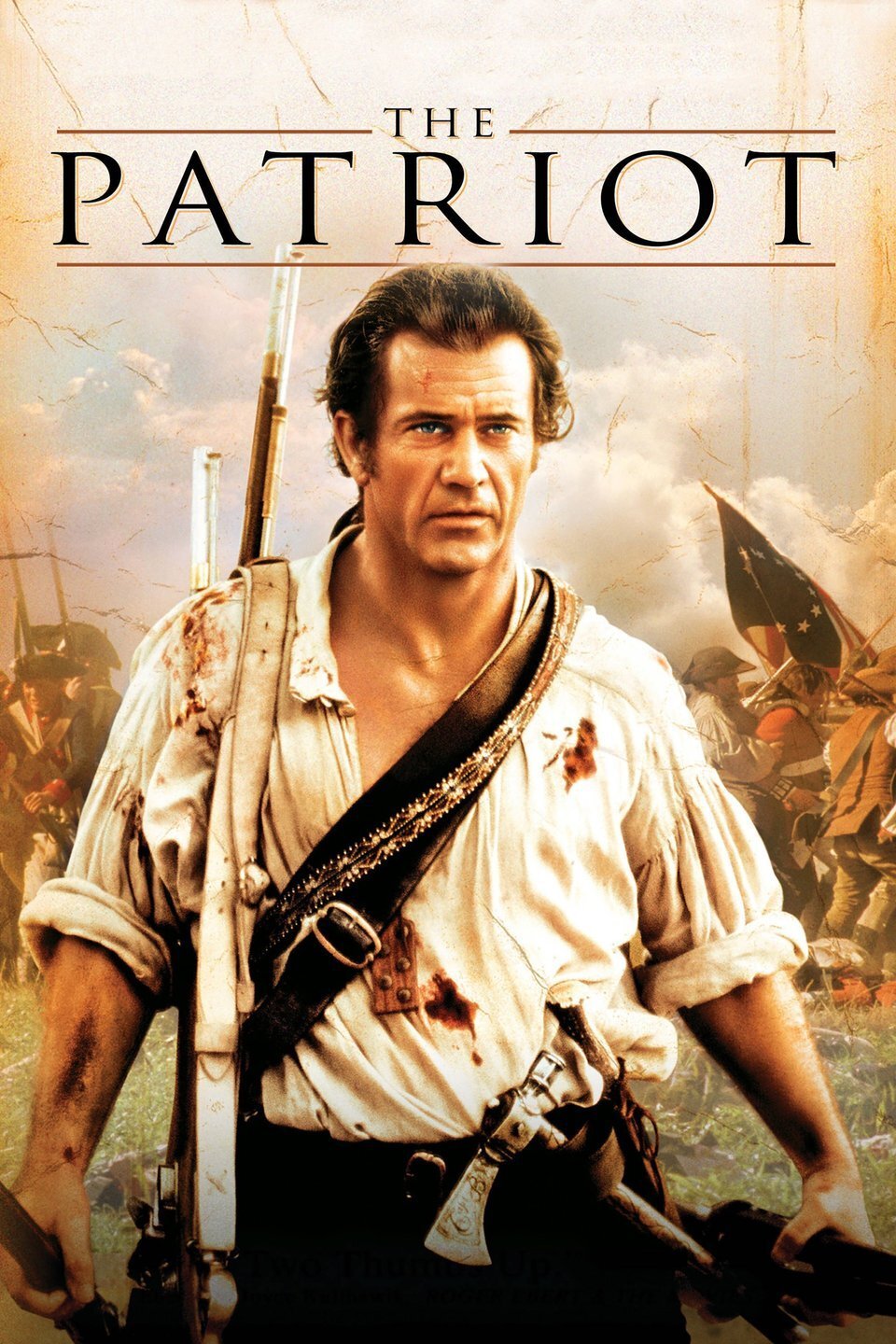The Patriot (2000)
“This is not a war for the independence of one or two colonies, but for the independence of a nation.”
The American Revolution has received a fair amount of attention over the last decade or two, with solid books by Joseph Ellis (American Creation) and David McCullough (1776), television series like Turn and John Adams, and even a musical - Hamilton. But there haven’t been a whole lot of big screen movies on it.
The Patriot is one.
We’ll tread light on Spoilers, but if you were awake for 3 minutes in your 10th grade U.S. history class you already know the big ones: Back in 1776, thirteen British colonies decided they wanted to go their own way, Britain wasn’t cool with that and sent about 48,000 Redcoats (along with 30,000 German mercenaries and 13,000 Native American allies) to change their minds. Over the next 8 years, the war cost the new Americans almost 25,000 men and the British and their allies twice that before the British throw in the towel and the United States was recognized as an independent nation.
The Patriot zooms in on the war in South Carolina, focusing on the action (and there’s a lot of it) of plantation owner, French and Indian War veteran, and politician Benjamin Martin (Mel Gibson) and his family (especially his son, Gabriel, played by Heath Ledger) as they are drawn into the war.
Spoiler: The British lose.
So how is this movie?
Watching The Patriot was a little challenging for me because when I’m not writing groovy movie reviews, my main gig is as a History professor - specializing on the American Revolution. That forced me to look at this movie both as history and a story.
As history, it is a pretty mixed bag. While it does include a handful of real figures, notably General Cornwallis (Tom Wilkinson - Selma), most are fictional or only loosely based on actual people. Gibson, for instance, is a mash up of an American insurgent named Francis Marion and South Carolina militia leader, Andrew Pickens, while his arch-enemy, Colonel Tavington - played by Jason Isaacs - is a knockoff of British cavalry officer Banastre Tarleton. It goes down easier if you don’t get too caught on the details (Tarleton was only 21 when the war broke out, so way younger looking than Isaacs) and think of them as composites, but if you breath this stuff some of it can get annoying.
Positively, the sets and costumes were great, much due to the filmmakers having consulted with the Smithsonian Institute. The biggest flaw in the clothing department is that the costumes look like just that - costumes. Everyone’s outfit looks fresh, crisp, and like it was just picked up at the dry cleaners. No patches, missing buttons, or loose threads. The outfits looked more like something from a Disney set than real clothing worn by people living in the rough world of the 1770s.
Speaking of Disney…
The elephant in the room in The Patriot is its treatment of slavery. The most generous way I can describe it is that it is a Disneyfied version of what was an extremely complex and often brutal affair. Slavery was ubiquitous in South Carolina during and after the war and many leaders of the state were enormously afraid of the threat of slaves revolting or joining the British. A very small number served with patriot forces (most notably with Marion - one of the characters Gibson’s Martin is based on) but most were forbidden to serve except as labor. Toward the end of the war, some patriot leaders took to granting slaves as a bounty for Whites to enlist (including Pickens, another of the templates for Martin). It was anything but the “we’re all in it together” picture presented in the film.
In the movie, the writer and director clumsily attempt to sidestep the issue by declaring that all the slaves on Martin’s plantation were Freedmen, with Martin himself (and his family) demonstrating decidedly late twentieth-century sensibilities about race. This is remotely possible, but extremely unlikely. Indeed, the filmmakers go so far out of their way to show Martin as a “good” master, that they insert a positively Orwellian twist to the practice of the British offering slaves their freedom, painting the British as evil for liberating them.
On the history side, it is probably fair to say that The Patriot is to the history of the War for Independence what Inglourious Basterds was to the history of World War Two: something “inspired” by it, but not meant to teach it.
So how about it as a straight story?
The acting is pretty vanilla (‘though Ledger is solid in all of his scenes) and the script lurches from one contrived event to another…but this is a big studio movie and looks like it, with competent cinematography, good costumes and sets, and perhaps the best source material out there - America’s first and most important war.
The Patriot is not the best movie ever made. But if you want to feel good about America (and hopefully inspired to read about the actual Revolution), you could do a lot worse than having this in your Independence Day weekend rotation.
You can catch The Patriot HERE.
Three out of Five Bombs Bursting Bright.
🌟🌟🌟
What did you think of The Patriot? What’s your go to Independence Day weekend movie? Drop us a note and let us know!
Post Credit Trivia!
The two lead actors from The Patriot did not attend that 10th grade History class I mentioned. Ledger was born and raised in Australia and Gibson, while born in the U.S., moved to Australia in the late 60s with his family and attended school there in the 60s and 70s.

